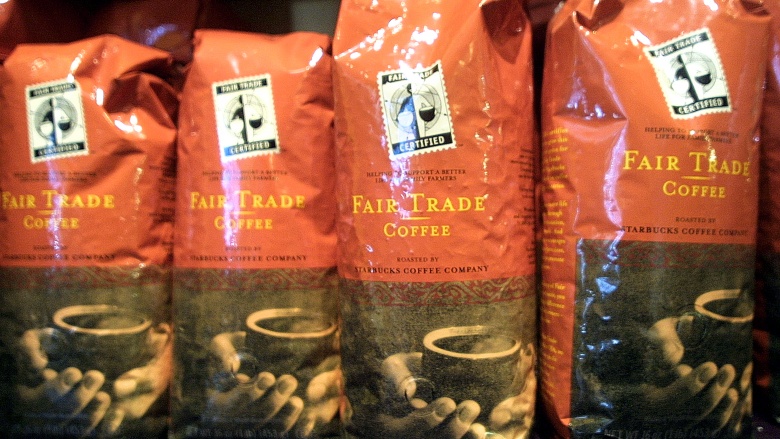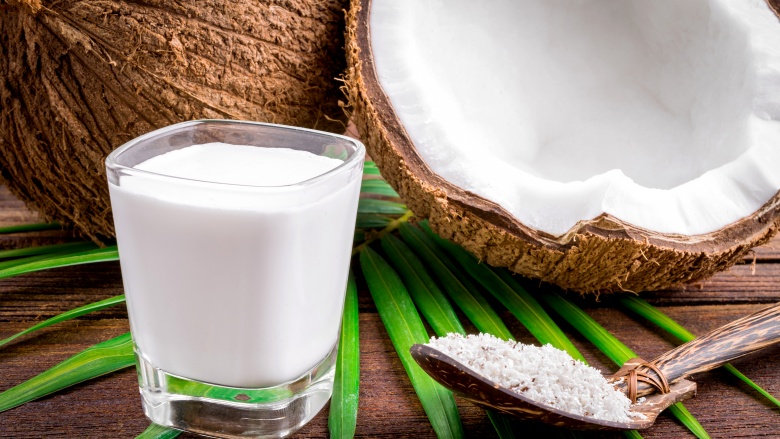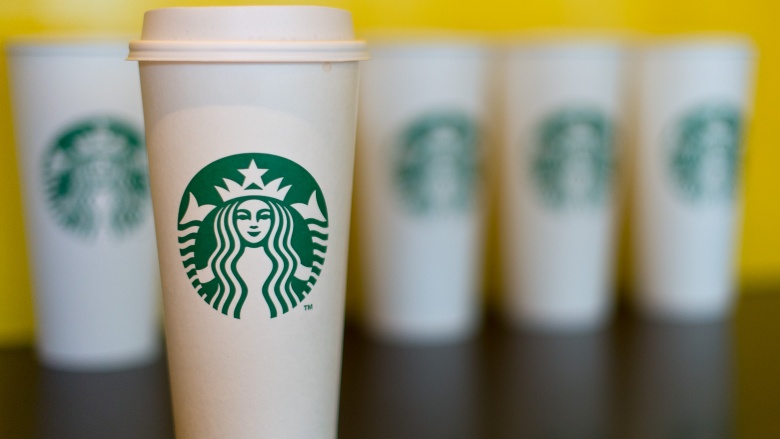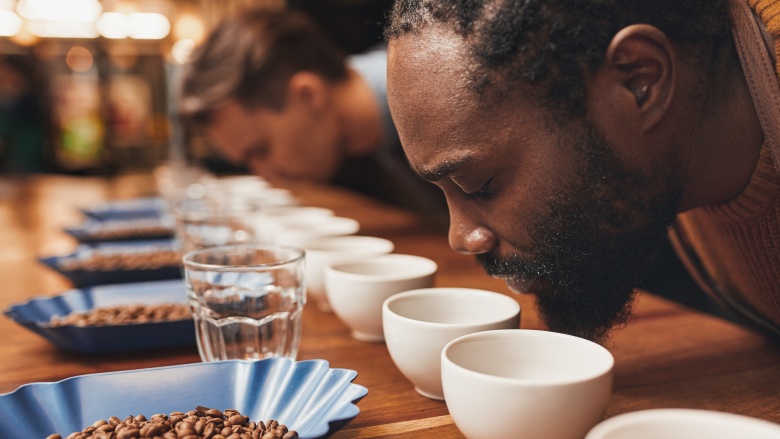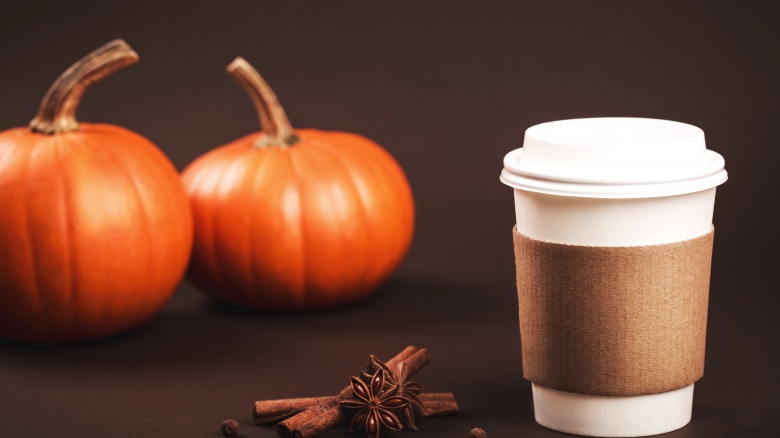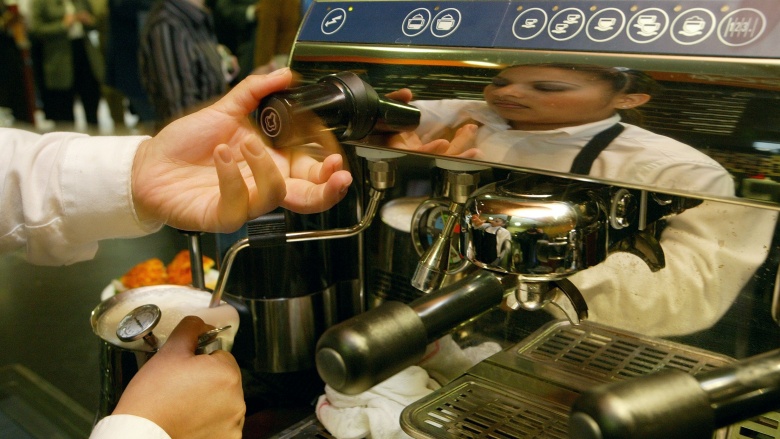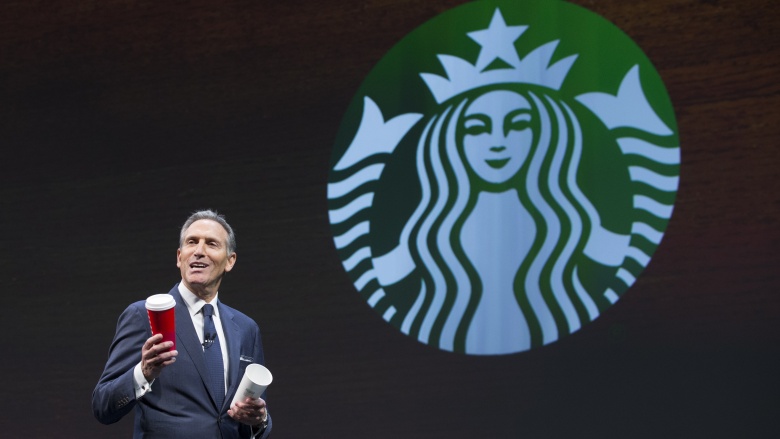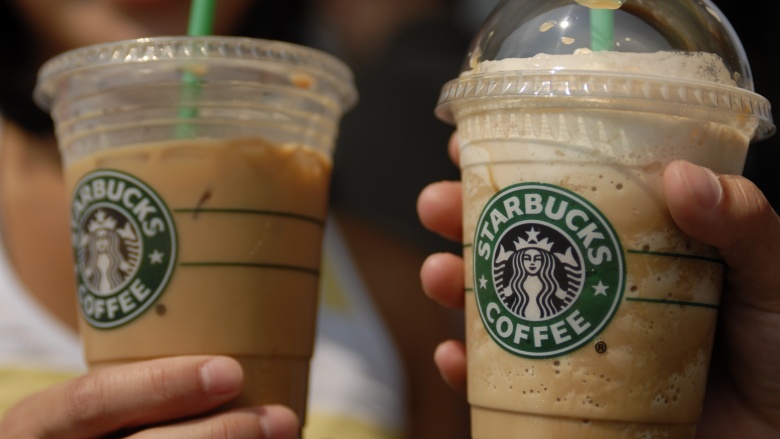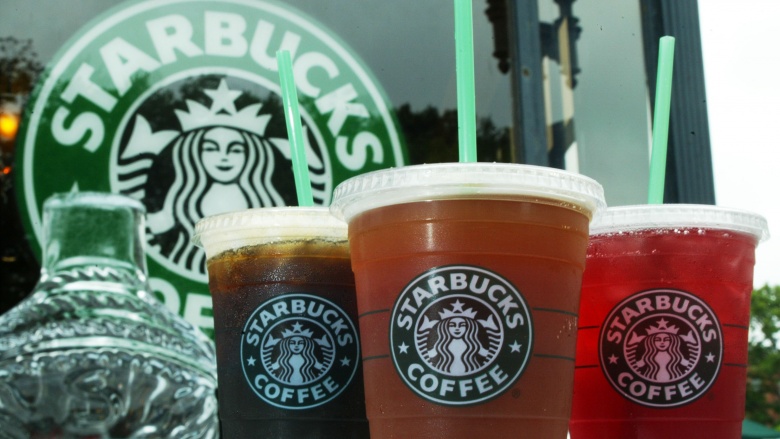Secrets Starbucks Doesn't Want You To Know
Since they opened, Starbucks has become a way of life in America. Whether you like them or not, you can still walk past them a staggering number of times on your way to pretty much anywhere. They're one of the most polarizing brands out there today, especially in the restaurant and coffee shop trade, and in spite of the vocal naysayers, they're not showing any signs of going anywhere. Those naysayers do have some excellent points, though, so let's take a look at some of the things the socially- and environmentally-conscious company would rather you didn't find out about.
They butted heads with Oxfam over their Fair Trade coffee
Starbucks might be most familiar as the coffee chain that's more than happy to tell you all about how ethical and environmentally conscious they are, but that doesn't mean their history has been squeaky-clean when it comes to things like ethics.
It started with their Fair Trade coffee, and fair trade is a good thing. It basically means the product was produced in environmentally- and employee-friendly conditions, and that there's a set limit on the lowest price a buyer can possibly pay for the product. In 2006, the international charity Oxfam took aim at Starbucks and claimed that their opposition to Ethiopia's attempts to trademark three of their coffee varieties meant they were standing in the way of major developments for the country and coffee farmers. Starbucks retaliated by saying they were opposed to the plan because of the potential damage that could be done by new legal regulations that might be put in place to govern the sale of the trademarked coffee, and added that they were only looking out for the little guy. They were undoubtedly front-and-center in the whole thing, with the chief executive of Starbucks even meeting with Ethiopia's prime minister to discuss the plans.
While there were a whole lot of other legal issues behind the conflict and it was by no means a cut-and-dry issue, it's never good publicity when organizations like Oxfam take you to task over the very thing you're trying to build your business on. It also put an even bigger spotlight on that fact that there's plenty of coffee Starbucks serves that's not fair trade at all.
Their coconut milk isn't exactly coconut milk
For customers who are lactose intolerant or just looking for a healthier, non-dairy option, Starbucks offers coconut milk. You might be expecting that you'd be drinking something that's largely made of coconut and water, as most coconut milks are. But take a look at the ingredients from Starbucks, and you'll find something very different.
Their coconut milk includes things like xanthan gum, tricalcium phosphate, and carraageenan. The third ingredient on the list is cane sugar, and if you're thinking you can get around having sugar in your coffee you should know that's not happening if you opt for coconut milk. The bottom line is, it's not a horrible option...but it's not a great one, either, and it's certainly not sugar-free. We all know Starbucks isn't usually healthy, but this one seems just a little bit on the sneaky side.
Some of their practices are unsustainable
This one also flies in the face of most things that Starbucks seems to stand for, and it wasn't until 2013 that the coffee giant was publicly called out for using palm oil, a component in its baked goods that had a particularly heartbreaking side effect. Harvesting the palm oil has meant the deforestation of huge parts of Indonesia and Malaysia. Voices for Biodiversity estimates that around half of the two countries' natural forests have been destroyed and replaced with palm oil plantations. In the process, that's meant the deaths of at least 50,000 orangutans, along with the countless other species that once called those forests home.
National Geographic and primatologists worldwide want you to think about that next time you pick up a scone or muffin from Starbucks. They remained one of the last holdouts against plans to help fix this massive problem. Years went by, with no real commitment or action taken by the coffee chain. Activist group SumOfUs challenged Starbucks, and as of January 2016 say their threat of legal action against the chain finally pushed them into action to head back and negotiate ways of actually making a difference, instead of just updating their website with vague promises.
Cups aren't recycled or recyclable
When it comes to making a positive difference in the environment, recycling should be a no-brainer. In spite of the fact that they do encourage using reusable travel mugs, Starbucks dropped the ball on something big: the recyclability of their cups. Someone first took Starbucks to task in 2008. The numbers were pretty staggering, and Stand reported they were using around 4 billion cups every year. That was the equivalent of 1.6 million trees destroyed just to make single-use cups that were then tossed in the garbage. Those cups aren't widely recyclable because of the process that's used to seal them. In order to keep the coffee inside where it belongs, the cups are infused with a polyethylene that can't easily be removed from the paper. To add insult to injury, they aren't made from recycled materials, either.
But didn't you see a recycling symbol on your cup? That's a technicality. The cups are made with a thin liner that's sealed against the heat of the beverage inside. Technically, they can be recycled, but the process requires equipment so specialized that only two facilities in the UK are even capable of doing it — and one never has. For a country that goes through 2.5 billion cups a year (from several different chains), that's not cool.
It wasn't until July 2016 they finally started a trial run of cups that are fully recyclable, invented by an engineer and created with a resistant inner liner that's easy to separate from the rest of the cup.
They lose a huge number of blind taste tests
So you really like a particular blend or brew from Starbucks. Do you really, though? Starbucks comes up on the losing end on a huge number of blind taste tests, and one thing they probably don't want people to know is just how badly they do when they're stripped of their logo and put next to someone else's coffee.
As far back as 2007, Starbucks made headlines when it lost blind taste tests to the most unlikely competitor: McDonald's. According to Consumer Reports, not only was the McDonald's coffee cheaper, but rated as better overall. The Bold Italic did a blind taste test with an admittedly small group of San Francisco coffee enthusiasts, and Starbucks came in a dismal last. To add insult to injury, it was beat not only by other trendy brands, but by grocery store mainstay Folgers. In 2016, GeekWire pitted Starbucks against three other choices, and the clear winner of that taste test was, again, Folgers. And perhaps worst of all was Cosmopolitan's blind taste test of pumpkin spice lattes, where Starbucks went up against McDonald's and Dunkin Donuts. Starbucks not only lost, but was described as tasting like nothing more or less than a Yankee candle. Yum.
Everything about the pumpkin spice latte
And speaking of the pumpkin spice latte, there's not much Starbucks probably wants you to know about what's really in your cup on this one. It's one of their most iconic drinks, but it wasn't until 2015 that it contained something that might have seemed like a bit of a given. (That's pumpkin.)
The pumpkin spice latte first hit in 2003, and for 12 years it didn't contain any pumpkin at all. The pumpkin flavor came artificially, and even though the controversial "Food Babe" Vani Hari took credit for initiating the movement to turn the PSL into something with real pumpkin, that's a connection that hasn't been confirmed. While they've added pumpkin, there's still a handful of sugars and preservatives on the list of ingredients, too.
And speaking of sugars, they probably don't want you to know how addicting this particular drink is, either. There's some hard science behind it, and Wired took a look at just why people keep going back for the PSL. It all has to do with the combination of caffeine, sugar, milk fat and salt, and that weird combination has been found to provide a brain rush and dopamine surge on par with some highly addictive drugs.
They only switched to hormone-free milk after consumer pressure
For as environmentally and socially responsible as they say they are, Starbucks continued using a product that gave most people chills. In 2007, the chain was feeling the pressure from the public regarding the use of milk produced with help from the growth hormone rBGH. Recombinant bovine growth hormone was approved by the FDA but banned in the EU and Canada, leaving the US as the only one using the product found to (probably) not cause any problems for the humans that ingested it. It did, however, cause significant health problems for the cows that were treated with it, and that's not cool, either. As early as 2000, Starbucks seemed to be aware of the potential issues and claimed they were going to go rBGH-free, but seven years later it still hadn't happened.
It wasn't until 2008 that Starbucks announced they were rBGH-free, but then, another problem with their milk came to light. In 2014, there was another push to try to get them to make sure the milk they were serving at all their locations was GMO-free, too. With other companies promising to get rid of GMO ingredients, the public began demanding the same thing of Starbucks.
They're a member of the controversial Grocery Manufacturers Association
Tracking down the truth behind the rumors can be a tricky thing sometimes, and in this case, the story goes that Starbucks was part of a lawsuit against the state of Vermont. Vermont was trying to pass legislation in 2014 that would require the labeling of products that contain GMOs, and Starbucks was supposed to be one of the companies trying to stop that legislation. The shadiness behind this one's pretty clear, and it didn't take long for Starbucks to come forward and say they didn't really have anything to do with the lawsuit at all.
This all came from the public's realization that Starbucks is a member of an organization that's generally regarded with a certain amount of suspicion. The Grocery Manufacturers Association is a group that has their fingers in all areas of the food manufacturing industry, in everything from safety regulations to recall information exchanges and allergy awareness. Other members include industry giants like Dannon, Kraft, Pepsi, Kellogg's, and even Purina. The argument from Starbucks was since they hadn't brought the lawsuit directly, they could completely distance themselves from the whole thing.
But others argue that since Starbucks is an active member of the organization, they can't exactly pick and choose when they want to support them. In an issue as big as GMOs and full disclosure to the public, it's an all-or-nothing viewpoint...especially when this potentially precedent-setting lawsuit was being brought at the same time Starbucks was under pressure to switch to GMO-free milk.
They've been short-changing customers on their drinks for years
When you order a Venti latte (or any other drink, for that matter), you're probably expecting you're going to get 20 ounces of said beverage. There have been a few lawsuits in the past few years claiming that's absolutely not what you're getting, and that the company has been shorting their customers for years.
In early 2016, two separate lawsuits claimed there was too much ice in their iced coffee, and Starbucks responded with the completely legitimate reasoning that if you wanted an iced coffee, there needed to be a lot of ice in it. It's thermodynamics, not cheating. The California judge in one of the lawsuits had some choice words for the plaintiff when he threw that suit out of court. That led to the end of that problem, but there's another one.
In March 2016, two customers filed a lawsuit that claimed Starbucks underfilled their lattes by as much as 25 percent. According to the lawsuit, the fill line of the equipment used to prepare the lattes doesn't match up with the sizes of the actual cups, which hold the precise amount that's advertised with no room for leaving any space between the coffee and the cup rim. The recipes and procedures were based on 2009 practices, and the federal judge who took a look at the evidence ruled the lawsuit could proceed. When the Today Show bought half a dozen lattes to see just how much was in each one of them, they found none contained the advertised amount. While it remains to be seen how much of it was done on purpose, it is worth knowing that each cup needs to be filled to the brim if you want to get all the coffee you've paid for.
So, how bad for you are these drinks?
No one goes to Starbucks thinking they're getting something diet-friendly, but some of the drinks you're ordering might be much more than you're bargaining for. Have you ever ordered the White Chocolate Creme Frappuchino? If you've gotten the Venti size, you downed a whopping 510 calories. In comparison, a Big Mac from McDonald's has 540 calories. If you went for the White Chocolate Mocha Frappuchino, you passed the Big Mac's calorie count and kept going with a drink that tops out at 550 calories. Think you're making a healthy choice if you go with the Tazo Green Tea Frappuchino? 560 calories. There are others that go on from there, with the White Hot Chocolate at the head of the class with an almost unthinkable 640 calories.
That's not even looking at sugar content, and in 2016 the UK group Action on Sugar analyzed the sugar content in some of the chain's drinks. At the top of that particular list was the Venti Grape Mulled Fruit, and anything that has both "fruit" and "grape" in the name has to be healthy, right? Keeping in mind the American Heart Association recommends limiting daily sugar intake to 6 teaspoons for women and 9 for men, how do you feel knowing that this particular drink contains 25 teaspoons of sugar? That's 99 grams and that's insane. Starbucks responded by saying they were planning on reducing the sugar content of their drinks by up to 25 percent by 2020, and even though that's a step in the right direction, it's still only a step to an insane amount that they probably don't want you to know about, either.

